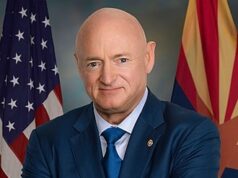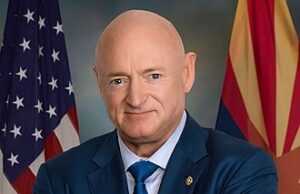Kansas now fifth state with over 5,000 megawatts of wind installed
WASHINGTON, D.C. – (RealEstateRama) — Over 40 percent more wind power projects are under construction or advanced development in America than at this time last year, according to second-quarter results released today by the American Wind Energy Association (AWEA).

Across the country, 29 wind projects, representing a combined 3,841 megawatts (MW), announced that they either began construction or entered advanced development in April through June 2017, for a total of 25,819 MW of wind projects currently underway. That is up more than 7,500 MW from the 18,279 MW underway as of one year ago, an impressive feat because nearly 10,000 MW of additional wind projects came online over that time period and therefore were subtracted from the under-construction total.
Findings in the new U.S. Wind Industry Second Quarter 2017 Market Report show nearly 80 percent of current wind turbine construction and advanced development activity is found in the Midwest, Texas and the Mountain West, as America’s rich wind resources draw even more business to heartland states. Other highlights in the second quarter include six major commercial and industrial customers buying U.S. wind power for the first time, including Apple and General Mills, and two offshore wind projects that were awarded Maryland offshore renewable energy credits (ORECs), a key step in their development.
“The path to unlocking America’s full energy potential is clear with another strong jump in the number of wind projects moving forward,” said Tom Kiernan, CEO of AWEA. “Wind energy makes our power system more reliable and resilient and protects consumers by diversifying our energy mix. The wind industry is propelling American energy production, manufacturing, and job creation into the 21st Century.”
Strong wind power development continued in rural America this quarter, where wind has become a major source of new investment and jobs in many communities.
Kansas just became the fifth state to surpass 5,000 MW of installed wind power capacity, as the largest U.S. wind project installed this quarter added 178 MW in the state. Kansas now has enough wind power capacity to supply 1.5 million average homes, supporting nearly 6,000 jobs in the state, and making lease payments of up to $15 million a year to its farmers and ranchers.
Kansas Governor Sam Brownback declared, “In my first State of the State speech in January of 2011, I said that Kansas was already known as the Wheat State and the Sunflower State, but that I wanted Kansas to also be known as the Renewables State. Fast forward six years, and Kansas has made major strides to achieving that lofty goal. Today, Kansas can officially say it has joined the “5,000 Megawatt Club” a distinction only four other states have achieved. But, we don’t intend to stop. A year ago, I announced another goal for Kansas – to be powered 50% by renewable energy by January 2019 – one of the most aggressive renewable energy policies in the country. Here’s to the next 5,000 megawatts of wind energy capacity in Kansas and the jobs, businesses and private capital it brings to all parts of our great State.”
Momentum behind offshore wind continued this quarter following last year’s completion of the first American offshore wind project off Rhode Island. During the second quarter, the Maryland Public Service Commission awarded offshore renewable energy credits (ORECs) to two planned offshore wind energy projects that will total 368 MW.
Also in the second quarter, Massachusetts, in partnership with local electric distribution companies, issued a request for proposals for between 400 MW and 800 MW of offshore wind power.
Wind energy expanded to an entirely new industry this quarter when General Mills, the first grocery staples producer to purchase wind energy, signed a 15-year contract for 100 MW of Texas wind power capacity. Other big-name corporate brands purchasing U.S. wind energy for the first time through long-term contracts called power purchase agreements (PPA) included Apple, T-Mobile, Goldman Sachs, Akamai Technologies, and Partners Healthcare.
These companies join recent purchasers General Motors, Proctor & Gamble, and many others who are buying wind because it’s good for their bottom line, locking in clean energy at a stable price for many years into the future.
In the second quarter, construction started on 2,495 MW of projects, while 1,346 MW entered advanced development. There are now 14,004 MW of wind projects under construction and 11,815 MW in advanced development. New wind power capacity added to the grid totaled 357 MW, similar to the second quarter last year.
Nationally, the U.S. now has 84,405 MW of installed wind power capacity, with more than 52,000 commercial wind turbines currently operating in 41 states plus Guam and Puerto Rico.
AWEA will celebrate the rapid growth of the industry and its benefits to rural America with its first-ever “American Wind Week,” Aug. 6-12, featuring tours of wind farms and factories and other opportunities to learn more about wind power. The week’s festivities will be capped with a community fair at noon on Saturday, Aug. 12 in the town square in Fowler, Indiana, population 2,300, whose economy has been transformed by the business from several nearby wind farms.
For a library of up-to-date images of wind turbines in America, please use this link.
###
AWEA is the national trade association of the U.S. wind energy industry. We represent 1,000 member companies and over 100,000 jobs in the U.S. economy, serving as a powerful voice for how wind works for America. Members include global leaders in wind power and energy development, turbine manufacturing, and component and service suppliers. They gather each year at the Western Hemisphere’s largest wind power trade show, the AWEA WINDPOWER Conference & Exhibition, next in Chicago, Illinois, May 7-10, 2018. Find information about wind energy on the AWEA website. Gain insight into industry issues on AWEA’s blog, Into the Wind. And please join us on Facebook, and follow @AWEA on Twitter.

















